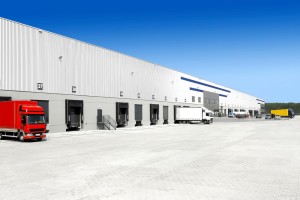Australian companies can greatly boost their profitability by making industrial property decisions in strong consultation with supply chain and logistics directors.
That’s the key message from David Irvine, Chief Executive Officer of leading Brisbane project management and advisory firm Siecap.
Siecap is a thriving, growing business which focuses on three core areas: project development and project management, cost optimisation and performance improvement, supply chain and logistics.
Its blue-chip clients include Transport For NSW, Caltex, Mercedes-Benz; Nexans Olex; Origin Energy; AGL Energy; Staples, Toyota; Super Amart; Super Retail Group; Fletcher Insulation and more.

“There is a growing trend – and it seems to be happening with more urgency – that Australian companies who’ve traditionally only considered property factors alone need to be made more aware of the growing influence of supply chain directors in making property-related decisions,” Mr Irvine said.
“Within that space, a lot of automation and trends coming down from North America and Europe have a fundamental ability to disrupt how people go about planning their warehouses and distribution centres in Australia today.
“By both driving costs and service, supply chains are also being used to add value to the customer experience with automation giving the ability to both reduce warehouse footprints, lower head count and improve overall performance”
Siecap puts customer strategy first, serving clients through the implementation of relevant, value-adding and cost-effective solutions which increase organisational effectiveness.

“Property is an enabler; it’s not a primary decision,” Mr Irvine said. “So, we basically look at what the company wants to achieve in terms of growth, customer service requirements, the competitive landscape and then provide fact based recommendations to assist the decision on the best infrastructure to support the company’s objective at the least cost.”
In addition, Siecap regularly conducts studies for the property sector on site logistics implications. Key supply chain cost drivers which need to be taken into account include: site occupancy encompassing real estate, facilities and overheads; labour and handling; inbound freight; inventory and outbound freight and potential surrounding infrastructure changes which could influence these elements.
“Companies which have factored logistics into their property decisions have enjoyed network operating cost reductions in the range of 10 to 16 per cent, as well as infrastructure cost reductions and logistics cost and service improvements,” Mr Irvine said.
Mr Irvine is a mechanical engineer with more than two decades’ experience as a business improvement and supply chain expert, providing advice to major corporations both in Australia and across the globe.
For more information, visit www.siecap.dev.cc.au.
